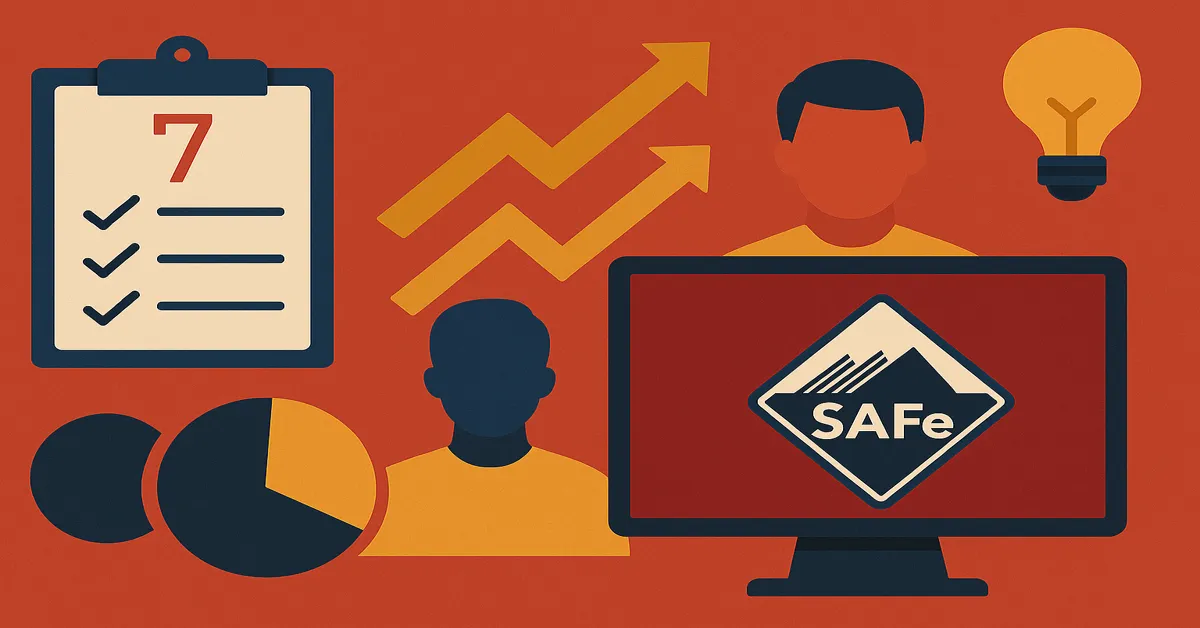With the demand for speed growing in business today, many organizations take on SAFe to manage challenging projects and be more agile as an organization. Companies hoping to use agile practices everywhere in their organization are turning to SAFe Scaled Agile Training as a significant investment. If you are planning SAFe Training in Pune or elsewhere, learning how to get the most from it is very important. You should keep these seven tips in mind before you start your SAFe training.
Understanding The SAFe Learning Journey
Learning with SAFe Scaled Agile Training is not a quick certification; it’s a thorough learning route. Knowing that SAFe has a variety of certification levels, each for a different job in the organization, is important before starting. Whether you are an executive or a practitioner, the right set of SAFe courses will support your career as well as your business.
SAFe regularly changes and updates to reflect new demands from organizations. You shouldn’t stop learning after completing your training and getting certified.
Preparing For SAFe Training: Pre-work Matters
Lots of attendees are unaware of why pre-work is so important for the training. Most SAFe classes ask you to read certain books before the training begins so you can follow the lessons more easily. Before reading, you are often given articles, videos and exercises that teach you about SAFe.
If you take the time to understand the pre-work, you’ll be ready to interact more fully with the subject and join group discussions during the training. It’s very useful when learning in intensive courses, since they cover a lot of information within a limited time, like SAFe Training in Pune. Many successful participants say they spend 4-6 hours reading ahead of the training sessions.
Real-World Application: Beyond Certification
Many attendees seek a certification, but it is really using the principles in their workplaces that makes SAFe Scaled Agile Training worthwhile. During the training process, it’s important to look at how SAFe can be used to address your company’s problems rather than only trying to memorize the terms for the exam.
Experienced trainers add case studies and activities to allow you to apply the principles of SAFe in real situations.
Building Your SAFe Network
Many people often forget that joining SAFe Scaled Agile Training opens up a path for meeting experienced professionals in the industry. When implementing SAFe, it helps to have fellow practitioners who know the framework and can show you the way during times of challenge. You can use the people you connect with during training to support you in your SAFe journey.
During your SAFe training in Pune or anywhere, be sure to spend time speaking with your peers. Trade contact details with other participants, become a member of the SAFe community and take part in post-workshop talks.
Choosing The Right Training Provider
Who you choose to learn from for SAFe Scaled Agile matters a lot for your training. Guiding Framework principles can be learned best from organizations with skilled and knowledgeable trainers.
Before choosing SAFe Training in Pune or anywhere else, focus on the trainer’s background with implementing SAFe, what course materials you will get and the nature of the learning area. Select a trainer who has directly applied SAFe in companies set up like yours, so they can provide useful information on top of the program’s standard chapters.
Post-Training Implementation Strategy
While many people take part in SAFe Scaled Agile Training hoping to use the framework at work, they find it difficult to put their learning into practice. Creating a plan for applying SAFe after training is very important for success in your organization.
While going through your SAFe Training in Pune or at any other place, write down ideas about how the learning might solve your organization’s problems. Be sure to find potential challenges for implementing the plan and talk with your trainer and peers about what to do. Following training, design a phased schedule so that SAFe is gradually introduced to your organization.
Continuous Improvement And Adaptation
Remembering to improve your processes continually is one of the main recommendations for users in SAFe Scaled Agile Training. SAFe is designed to be adaptable and should be customized based on what’s best for your organization.
After attending your SAFe Training session, continue to learn new things and change with the times. Keep checking how well SAFe is working in your organization and be prepared to adjust where necessary. Participate in SAFe forums, join advanced workshops and follow the latest updates in the framework.
Conclusion
Scaled Agile Framework training gives organizations useful advice and tools to increase the effectiveness of their agile methods. When you understand your learning path, get yourself ready, focus on real-world uses, develop your professional contacts, select a good training company, set a plan for using the training and always look for ways to do better, you can make your SAFe investment pay off. No matter where you are considering SAFe Training, these seven tips will make it easier for you to study and apply the SAFe Framework in your organization.

